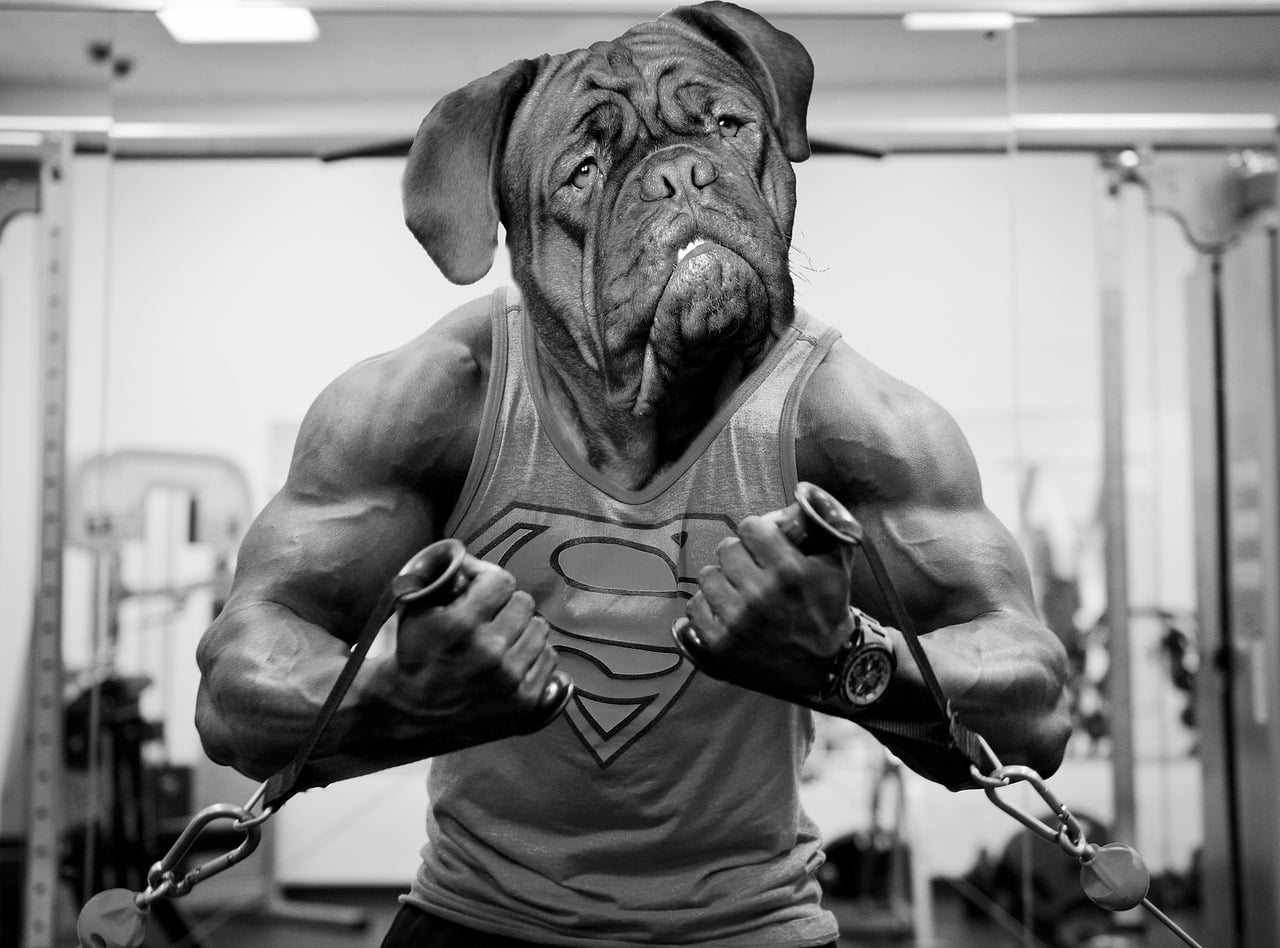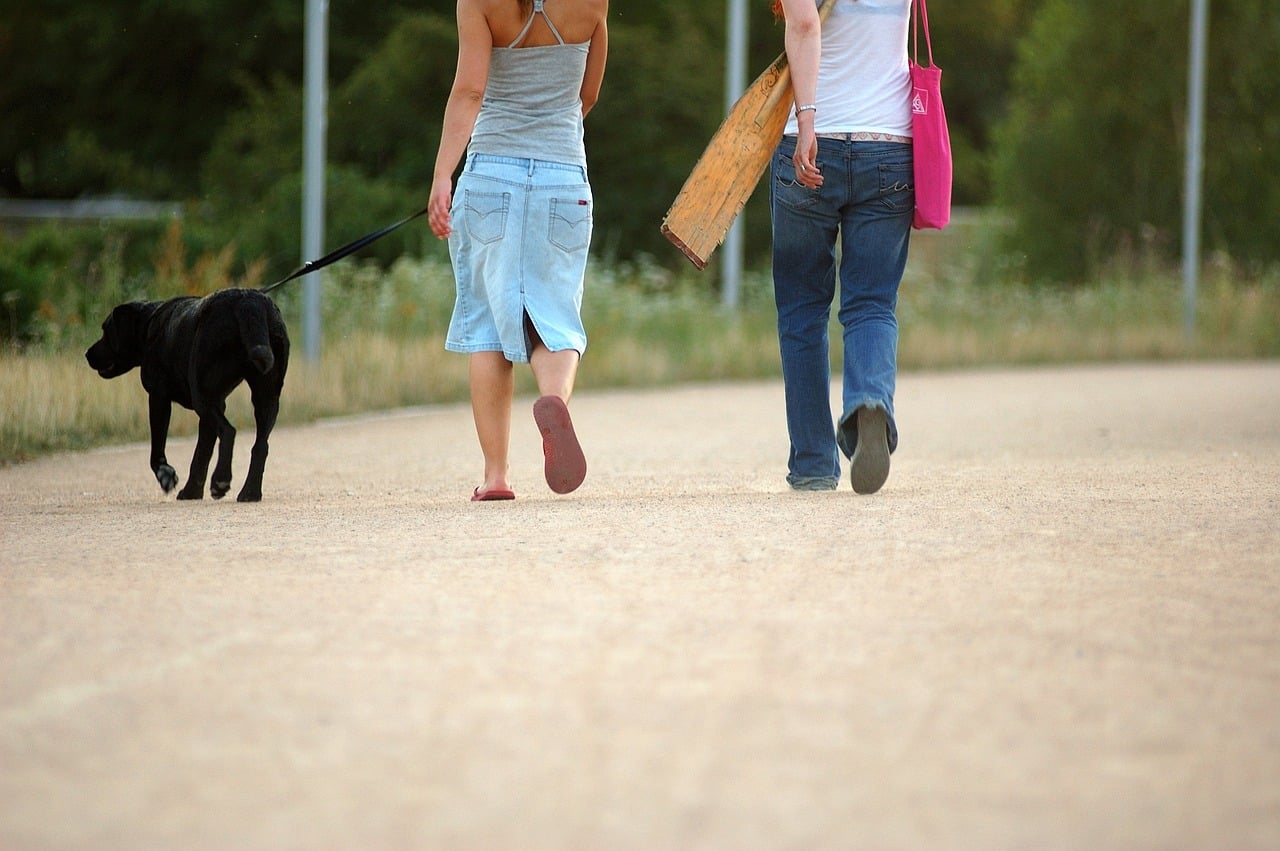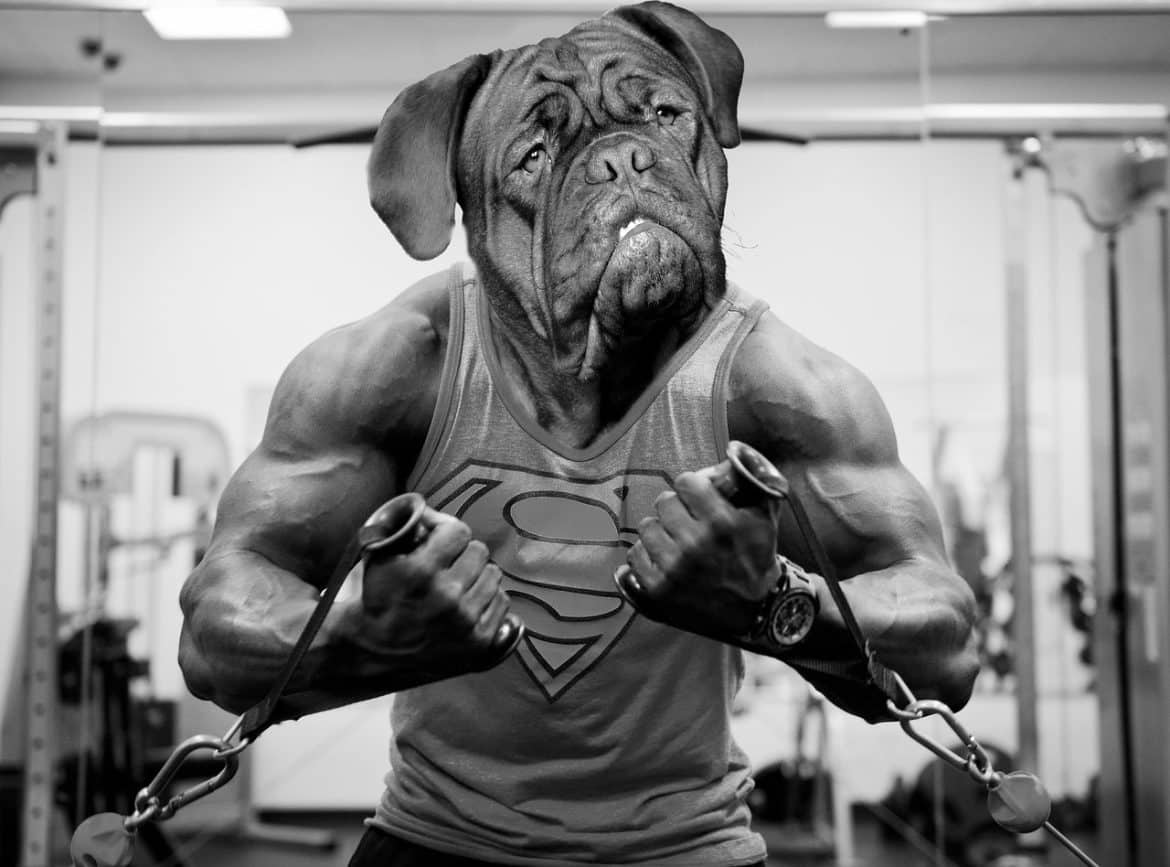If you've recently welcomed a playful puppy into your home, you may be wondering how to ensure their little legs grow strong and healthy. Fostering robust hind legs is crucial for their overall development and mobility. In this article, you will discover simple and effective tips to strengthen your puppy's hind legs, ensuring they have a solid foundation to explore the world with boundless energy and enthusiasm.
Importance of strengthening puppy hind legs
Having strong hind legs is crucial for the overall health and well-being of your puppy. Strong hind legs provide a solid foundation for your puppy's everyday activities, allowing them to move with ease, balance properly, and prevent injuries. By investing time and effort into strengthening your puppy's hind legs, you can ensure that they grow up to be active, happy, and healthy dogs.
Benefits of strong hind legs
Strong hind legs offer a multitude of benefits for your puppy. Firstly, it aids in their overall mobility, enabling them to run, jump, and play without restrictions. Additionally, strong hind legs provide the necessary support for your puppy's spine, reducing the risk of orthopedic issues such as hip dysplasia or spinal problems. Furthermore, well-developed hind legs contribute to enhanced agility and coordination, allowing your puppy to participate in various physical activities with ease.

This image is property of pixabay.com.
Common issues with weak hind legs
Puppies with weak hind legs may experience a range of issues that can impact their quality of life. One common problem is difficulty in walking or running properly, often resulting in a wobbly gait or instability. Weak hind legs can also lead to an increased risk of injuries, as the lack of strength and stability can make your puppy more prone to accidents or falls. Moreover, weak hind legs may contribute to muscle imbalances and poor posture, which can lead to long-term musculoskeletal problems if not addressed.
Preventing future health problems
Taking proactive measures to strengthen your puppy's hind legs can significantly reduce the likelihood of future health problems. By promoting muscle development and joint stability, you can minimize the risk of orthopedic conditions and improve your puppy's overall well-being in the long run. Proper strength training not only helps prevent injuries but also supports healthy bone growth and joint function. Start early and incorporate exercises gradually to lay the foundation for a healthier future for your furry companion.

This image is property of pixabay.com.
Exercise for strengthening puppy hind legs
Regular exercise forms the cornerstone of strengthening your puppy's hind legs. Engaging in a variety of exercises that target the muscles in the hind legs can promote strength, flexibility, balance, and coordination.
Walking and running
Good old-fashioned walking and running offer excellent low-impact exercises to strengthen your puppy's hind legs. Start with short walks and gradually increase the distance as your puppy builds up stamina. Allow them to explore different terrains, such as grass or sand, to engage the leg muscles more effectively. Running alongside your puppy can also motivate them to keep up the pace and maintain an active lifestyle.
Stair exercises
Incorporating stair exercises into your puppy's routine can be a fun way to strengthen their hind legs while also improving endurance. Start by encouraging your puppy to ascend and descend a few steps, ensuring they take the stairs slowly and with the proper body posture. As their strength and confidence increase, gradually increase the number of stairs and the speed at which they navigate them. Remember to always provide supervision and support during stair exercises to avoid any accidents or strain.
Hill or incline workouts
Utilizing hills or inclines during walks or dedicated workouts can add an extra challenge and provide targeted muscle strengthening for your puppy's hind legs. Find a gentle slope or incline in your area and allow your puppy to walk or run uphill, gradually increasing the difficulty over time. The incline engages the hind leg muscles more intensively than flat surfaces, helping to build strength and tone the legs effectively.
Stretching and flexibility exercises
In addition to strength training, incorporating stretching and flexibility exercises into your puppy's routine can enhance their overall hind leg health and prevent muscle tightness or imbalances.
Hamstring stretches
Gentle hamstring stretches can help increase flexibility and ensure proper range of motion in your puppy's hind legs. Begin by gently extending one of your puppy's hind legs forward and holding it in that position for a few seconds. Release the leg slowly and repeat with the other leg. Perform this stretch a few times on each leg, gradually increasing the duration. Do not force the stretch, as your puppy should be comfortable throughout the process.
Hip and glute stretches
Stretching the hips and glutes is essential to maintain flexibility and prevent discomfort in your puppy's hind legs. While gently holding your puppy's hind leg, bring it across their body towards the opposite side, allowing the hip joint to stretch. Hold this position for a few seconds before releasing. Repeat the stretch on the other leg, aiming for a comfortable range of motion. Remember to be gentle and never force the stretch.
Calf stretches
Stretching the calf muscles contributes to overall leg flexibility and joint health. One effective calf stretch technique for puppies involves gently pressing their paw down, extending the leg and flexing the foot. Hold this position for a few seconds before slowly releasing. Repeat the stretch a few times on each leg, ensuring your puppy is comfortable throughout the process.

This image is property of pixabay.com.
Balance and coordination exercises
Improving balance and coordination is paramount in strengthening your puppy's hind legs and preventing potential injuries. These exercises engage the muscles in the hind legs while also enhancing proprioception and body awareness.
Balance beams
Creating a simple balance beam using a low, sturdy object offers an excellent exercise for improving balance and stability in your puppy's hind legs. Place the beam on the ground and encourage your puppy to walk across it, making sure they maintain a steady and controlled gait. Begin with a short beam and gradually increase the length as your puppy becomes more proficient.
Paws-up exercises
Paws-up exercises involve getting your puppy to place their front paws on an elevated surface while keeping their hind legs on the ground. This exercise helps strengthen the hind leg muscles and promotes balance control. Start with a low platform or step, and encourage your puppy to place their paws on it for a short period. As they become comfortable, gradually increase the height of the platform to intensify the exercise.
Side steps
Teaching your puppy to perform side steps can enhance their coordination and strengthen their hind legs. Start by standing to the side of your puppy and gently guiding them to take small lateral steps. Make sure their weight is evenly distributed and their gait is controlled. Gradually increase the distance and speed of the side steps, challenging your puppy's balance and coordination.
Evaluating and adjusting the diet
A balanced diet plays a vital role in supporting muscle development and maintaining joint health, thereby contributing to stronger hind legs. Proper nutrition ensures that your puppy receives the necessary nutrients to build and repair muscle tissue, and aids in the growth of strong bones and joints.
Importance of a balanced diet
Providing a balanced diet is crucial for your puppy's overall health and growth. Ensure their meals consist of high-quality protein, healthy fats, complex carbohydrates, and essential vitamins and minerals. Opt for puppy-specific formulas or consult with your veterinarian to determine the ideal diet for your furry friend. A balanced diet provides the foundation for strong muscles, healthy bones, and optimal energy levels.
Protein for muscle development
Including an adequate amount of protein in your puppy's diet is essential for muscle development and repair. Protein provides the building blocks necessary for the growth and strength of your puppy's hind leg muscles. Look for high-quality sources of protein, such as lean meats, fish, and poultry, to ensure your puppy receives the necessary amino acids. However, it is important to consult with your veterinarian for specific dietary recommendations based on your puppy's breed, size, and age.
Supplements for joint health
Supplements can be beneficial in supporting joint health and maintaining mobility in your puppy's hind legs. Glucosamine and chondroitin are commonly recommended supplements that aid in the development and maintenance of healthy joints. These supplements promote joint lubrication and provide essential nutrients for cartilage health. Consult with your veterinarian to determine if supplements are necessary for your puppy and to determine the appropriate dosage.
Assistance devices and equipment
In certain cases, assistance devices and equipment can aid in building strength and supporting your puppy's hind legs during exercises. These tools can provide additional stability and assistance, especially if your puppy has specific health conditions or limitations.
Dog boots or shoes
Dog boots or shoes can be beneficial for puppies who have difficulty walking or maintaining grip on slippery surfaces. These accessories provide traction and stability, reducing the risk of slips and falls. They are particularly useful for puppies with weak hind legs or those recovering from injuries. Consult with your veterinarian to determine if dog boots or shoes are suitable for your puppy's specific needs.
Supportive harnesses
Supportive harnesses can assist in providing stability and support to your puppy's hind legs during exercises or walks. These harnesses distribute weight evenly, reducing strain on the hind legs and promoting proper posture. Supportive harnesses are especially beneficial for puppies with hind leg weakness or mobility issues. Consult with a professional trainer or veterinarian to choose a harness that is appropriate and properly fitted for your puppy.
Physical therapy tools
Physical therapy tools, such as balance discs or wobble boards, can aid in strengthening your puppy's hind legs and improving their balance and coordination. These tools challenge your puppy's stability and engage various muscle groups, promoting overall strength and stability. Consult with a veterinary professional or a certified canine physical therapist for guidance on using physical therapy tools effectively and safely.
Avoiding excessive strain on hind legs
While exercise is crucial for strengthening your puppy's hind legs, it is important to avoid excessive strain or overexertion, as it can lead to injury or discomfort. Implementing certain strategies can help ensure that your puppy's hind legs are not subjected to unnecessary pressure.
Limiting jumping and high-impact activities
Excessive jumping, especially from heights, can place a significant amount of stress on your puppy's hind legs. Landing improperly can lead to injuries or strain on the joints. Minimize jumping activities or offer support when your puppy needs to climb onto or descend from elevated surfaces. Additionally, high-impact activities, such as intense agility training or repetitive jumping on hard surfaces, should be gradually introduced and supervised to avoid potential harm.
Proper weight management
Maintaining a healthy weight is crucial for reducing strain on your puppy's hind legs. Excess weight places unnecessary pressure on the joints and can lead to discomfort or the development of musculoskeletal issues. Feed your puppy a balanced diet according to their specific nutritional needs and avoid overfeeding. Regular exercise, paired with appropriate portion control, helps manage their weight effectively and reduces the risk of hind leg problems.
Regular breaks during exercise
When engaging in exercise or training sessions, it is essential to allow for regular breaks to prevent your puppy from becoming fatigued. Overexertion can lead to muscle fatigue and hinder progress in strengthening your puppy's hind legs. By including short rest periods during exercise sessions, you give your puppy's muscles time to recover and rebuild. Gauge their energy and adjust the exercise intensity accordingly, ensuring they remain engaged and motivated without pushing them beyond their capabilities.
Monitoring and addressing any health issues
Regular monitoring of your puppy's overall health is imperative to identify and address any potential issues with their hind legs. Preventive measures can go a long way in ensuring your puppy's well-being.
Regular veterinary check-ups
Scheduling routine veterinary check-ups allows for early detection of any potential health issues and provides an opportunity for your veterinarian to assess your puppy's specific hind leg strength and development. Regular visits also enable you to discuss exercise routines, diet plans, and any concerns you may have regarding your puppy's hind legs. Your veterinarian can provide guidance tailored to your puppy's individual needs and make appropriate recommendations to strengthen their hind legs.
Identifying signs of discomfort or pain
Stay vigilant and observe your puppy for any signs of discomfort, limping, or reluctance to engage in physical activities. Common signs of hind leg issues include difficulty standing up, favoring one leg, or vocalizing during movement. If you notice any of these signs or any unusual behaviors, consult your veterinarian for a thorough examination and appropriate treatment plan. Early intervention can help prevent further complications and promote a swift recovery.
Seeking professional advice when needed
If you have concerns about your puppy's hind leg strength or if you encounter any difficulties during the strengthening process, don't hesitate to seek professional advice. Certified canine trainers or physical therapists experienced in working with puppies can provide valuable guidance, personalized exercises, and assistive techniques to help strengthen your puppy's hind legs effectively and safely.
Creating a safe and supportive environment
Maintaining a safe environment for your puppy is essential for promoting hind leg health and preventing accidents or injuries. Consider the following measures to create a supportive environment for your furry friend:
Providing slip-resistant surfaces
Ensuring that your puppy has proper traction throughout your home is crucial for preventing slips or falls. Use non-slip mats or rugs on slippery surfaces such as hardwood or tile floors to provide your puppy with secure footing. This helps reduce the risk of muscle strain or joint injury, especially during play or exercise sessions.
Removing obstacles and hazards
Take a proactive approach by removing any potential obstacles or hazards that may impede your puppy's mobility. Clear pathways of furniture or clutter to prevent accidents or collisions. Keep electrical cords or other hazards out of your puppy's reach to avoid entanglement or injury. A safe and open environment allows your puppy to move freely while minimizing the risk of hind leg injuries.
Using ramps or stairs with proper grip
If you have elevated surfaces in your home, such as sofas or beds, consider utilizing ramps or stairs with adequate grip to assist your puppy in climbing or descending. This helps reduce the strain on their hind legs, especially for puppies with existing vulnerabilities or recovering from injuries. The grip ensures stability and prevents slipping, offering your puppy a safer and more accessible means of maneuvering in your living space.
Gradual progression and consistency in training
When it comes to strengthening your puppy's hind legs, a key principle to keep in mind is gradual progression and consistency. Slowly increasing the intensity of exercises while maintaining a consistent training routine is crucial for optimal results and minimizing the risk of injury.
Starting with low-impact exercises
Begin with low-impact exercises such as short walks or gentle stretches to gradually introduce your puppy to the concept of strengthening their hind legs. This allows them to familiarize themselves with the exercises and build confidence before moving on to more challenging activities. Starting with low-impact exercises also helps prevent muscle soreness and ensures your puppy enjoys the training process.
Increasing intensity over time
As your puppy becomes more comfortable and capable, gradually increase the intensity of their exercises. This includes longer walks, steeper inclines, or adding more repetitions to stretching or balance exercises. Pay attention to your puppy's response and adjust the intensity accordingly. Aim for steady progress rather than rushing through the training process, allowing their muscles and joints to adapt and strengthen effectively.
Establishing a regular exercise routine
Consistency is key when it comes to strengthening your puppy's hind legs. Establishing a regular exercise routine helps your puppy develop endurance, strength, and coordination over time. Set aside dedicated exercise sessions each day and stick to a schedule that works for both you and your puppy. By making exercise a regular part of their routine, you are prioritizing their hind leg health and maximizing the benefits of the strengthening program.
In conclusion, strengthening your puppy's hind legs is essential for their overall health and well-being. By incorporating exercises that target muscle strength, flexibility, balance, and coordination, you can help your puppy develop strong hind legs that support their everyday activities and reduce the risk of health issues. A balanced diet, assistance devices when necessary, and a safe environment also play important roles in hind leg strength. It is crucial to monitor your puppy's health, seek professional advice when needed, and establish a consistent training routine to ensure the best possible outcomes. By prioritizing your puppy's hind leg health, you are setting them up for a happy and active life full of adventures.


